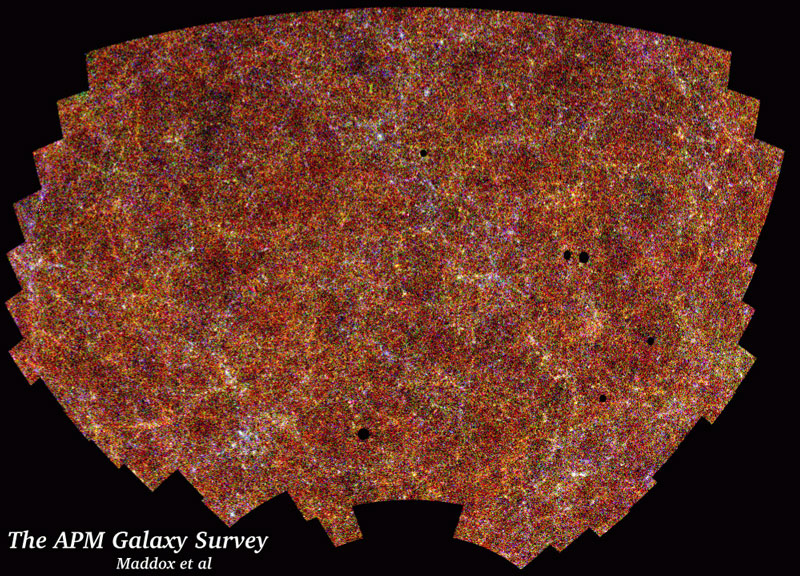
|
Explanation: Our universe is filled with galaxies. Galaxies -- huge conglomerations of stars, gas, dust -- and mysterious dark matter are the basic building blocks of the large-scale universe. Although distant galaxies move away from each other as the universe expands, gravity attracts neighboring galaxies to each other, forming galaxy groups, clusters of galaxies, and even larger expansive filaments. Some of these structures are visible on one of the most comprehensive maps of the sky ever made in galaxies: the APM galaxy survey map completed in the early 1990s. Over 2 million galaxies are depicted above in a region 100 degrees across centered toward our Milky Way Galaxy's south pole. Bright regions indicate more galaxies, while bluer colors denote larger average galaxies. Dark ellipses have been cut away where bright local stars dominate the sky. Many scientific discoveries resulted from analyses of the map data, including that the universe was surprisingly complex on large scales.
|
January February March April May June July August September October November December |
| ||||||||||||||||||||||||||||||||||||||||||||||||
NASA Web Site Statements, Warnings, and Disclaimers
NASA Official: Jay Norris. Specific rights apply.
A service of: LHEA at NASA / GSFC
& Michigan Tech. U.
Based on Astronomy Picture
Of the Day
Publications with keywords: galaxies
Publications with words: galaxies
See also:
- APOD: 2025 August 28 Á Galaxies, Stars, and Dust
- APOD: 2025 March 2 Á The Hubble Ultra Deep Field in Light and Sound
- APOD: 2024 December 31 Á The Twisted Disk of NGC 4753
- APOD: 2024 December 18 Á NGC 660: Polar Ring Galaxy
- Stellar Streams in the Local Universe
- APOD: 2024 April 15 Á The Cigar Galaxy from Hubble and Webb
- APOD: 2024 March 20 Á The Eyes in Markarians Galaxy Chain
